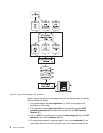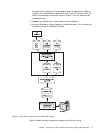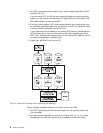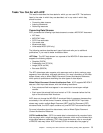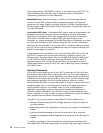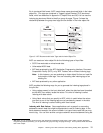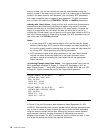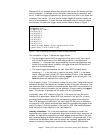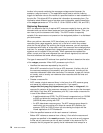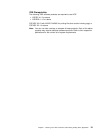location is the record containing the new-page carriage control character (for
example, a skip-to-channel 1). The application would need to add the indexing
trigger and attribute value to this record at a specified location on each statement in
the print file. This allows ACIF to retrieve this information at processing time. (For
information about different types of carriage control characters, see the description
of the cctype parameter on 27 for AIX, or 89 for OS/390 or MVS, VM, and VSE.)
Retrieving Resources
ACIF can determine the list of required AFP resources needed to view or print the
document and can retrieve these resources from the specified libraries. Then, you
can view or print the document with fidelity. This ACIF function is especially
valuable if the resources are not present on the designated platform in a distributed
print environment.
When you archive a document, ACIF also allows you to archive the retrieved
resources (fonts, page segments, and so on) in the form in which they existed
when the file was printed. By archiving the original resources, you can reproduce
the document with fidelity at a later date, even if the resources have changed since
that time. For example, suppose that a page segment contains a company officer's
signature and is included in the print data. When someone else replaces the
officer, current print files must reference the new officer's signature, but archived
files must reference the former officer's signature.
The type of resources ACIF retrieves from specified libraries is based on the value
of the restype parameter. When ACIF processes a print file, it:
Identifies the resources requested by the print file
While ACIF converts the input file into an AFP document, it builds a list of all
the resources necessary to successfully print the document, including all the
resources referenced inside other resources. For example, a page can include
an overlay, and an overlay can reference other resources such as fonts and
page segments.
Creates a resource file
| ACIF creates a logical resource library in the form of an AFP resource group
| and stores this resource group in a resource file. If you specify
| restype=fdef,font,pseg,ovly,objcon,bcoca, goca, ioca, or restype=all, this
| resource file contains all the resources necessary to view or print the document
| with fidelity. Each time ACIF processes a print file, it can create a resource file
| in one of two different formats:
| – A partitioned data set (PDS). The PDS format is supported only on OS/390
| or MVS and allows the resource file to be referenced as a user library
| (USERLIB) when printing with PSF.
| – An AFP data-stream resource group. The AFP resource-group format is
| useful when you are routing print output to remote AFP platforms (for
| example, PSF/2 on OS/2) or when you are viewing the output with the
| Viewer application of AFP Workbench.
Calls the specified resource exit for each resource it retrieves
Before ACIF retrieves a resource from a library, it first calls the resource exit
program as specified in the resexit parameter. You can write an exit program
to filter out any resources you do not want included in the resource file. For
example, the exit program can specify that all referenced fonts except for a
14 ACIF User’s Guide



